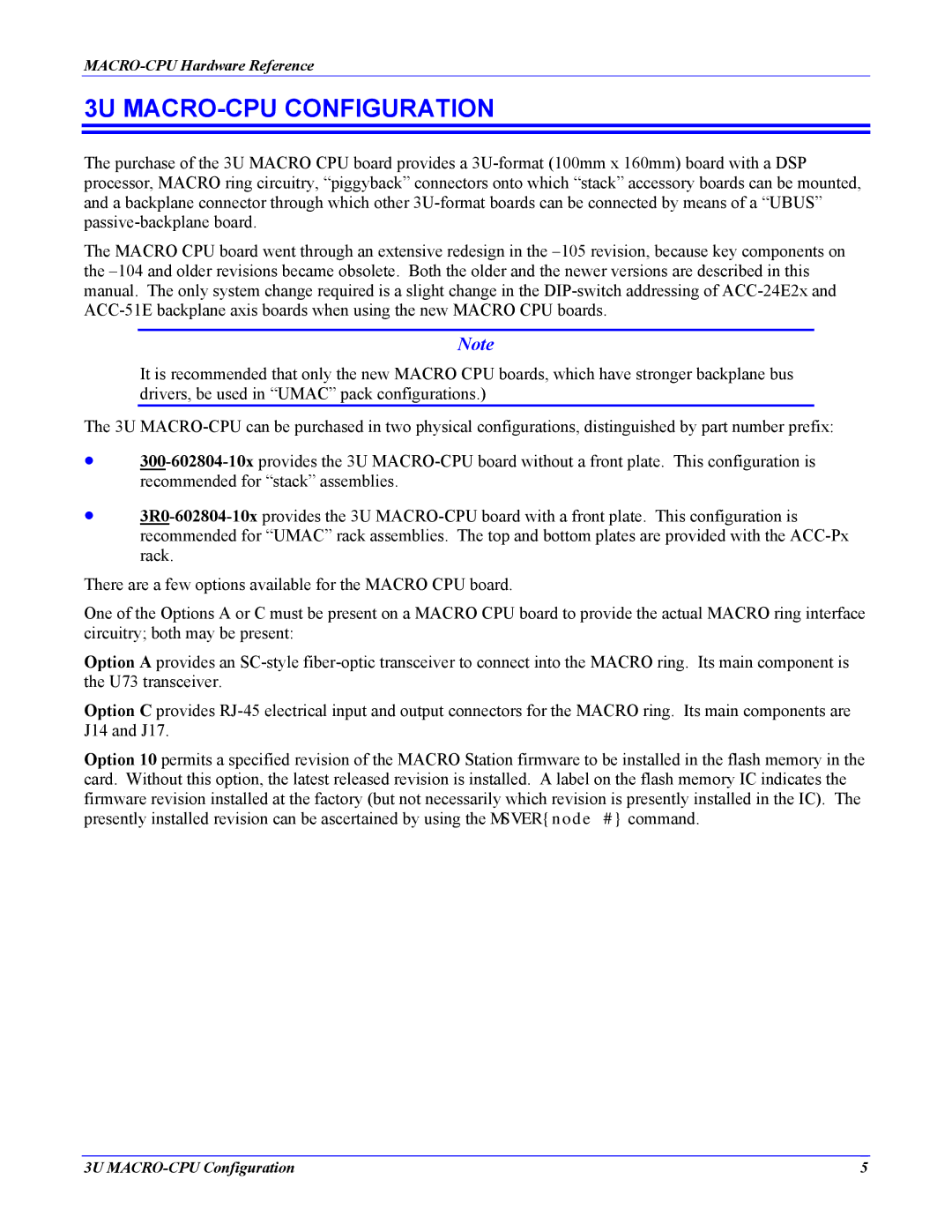MACRO-CPU Hardware Reference
3U MACRO-CPU CONFIGURATION
The purchase of the 3U MACRO CPU board provides a 3U-format (100mm x 160mm) board with a DSP processor, MACRO ring circuitry, “piggyback” connectors onto which “stack” accessory boards can be mounted, and a backplane connector through which other 3U-format boards can be connected by means of a “UBUS” passive-backplane board.
The MACRO CPU board went through an extensive redesign in the –105 revision, because key components on the –104 and older revisions became obsolete. Both the older and the newer versions are described in this manual. The only system change required is a slight change in the DIP-switch addressing of ACC-24E2x and ACC-51E backplane axis boards when using the new MACRO CPU boards.
Note
It is recommended that only the new MACRO CPU boards, which have stronger backplane bus drivers, be used in “UMAC” pack configurations.)
The 3U MACRO-CPU can be purchased in two physical configurations, distinguished by part number prefix:
•300-602804-10xprovides the 3U MACRO-CPU board without a front plate. This configuration is recommended for “stack” assemblies.
•3R0-602804-10xprovides the 3U MACRO-CPU board with a front plate. This configuration is recommended for “UMAC” rack assemblies. The top and bottom plates are provided with the ACC-Px rack.
There are a few options available for the MACRO CPU board.
One of the Options A or C must be present on a MACRO CPU board to provide the actual MACRO ring interface circuitry; both may be present:
Option A provides an SC-style fiber-optic transceiver to connect into the MACRO ring. Its main component is the U73 transceiver.
Option C provides RJ-45 electrical input and output connectors for the MACRO ring. Its main components are J14 and J17.
Option 10 permits a specified revision of the MACRO Station firmware to be installed in the flash memory in the card. Without this option, the latest released revision is installed. A label on the flash memory IC indicates the firmware revision installed at the factory (but not necessarily which revision is presently installed in the IC). The presently installed revision can be ascertained by using the MSVER{node #} command.

